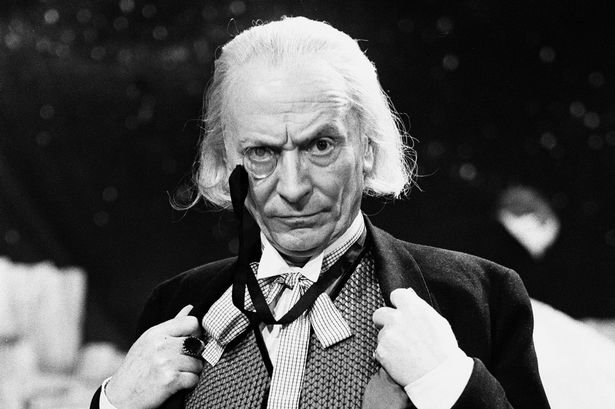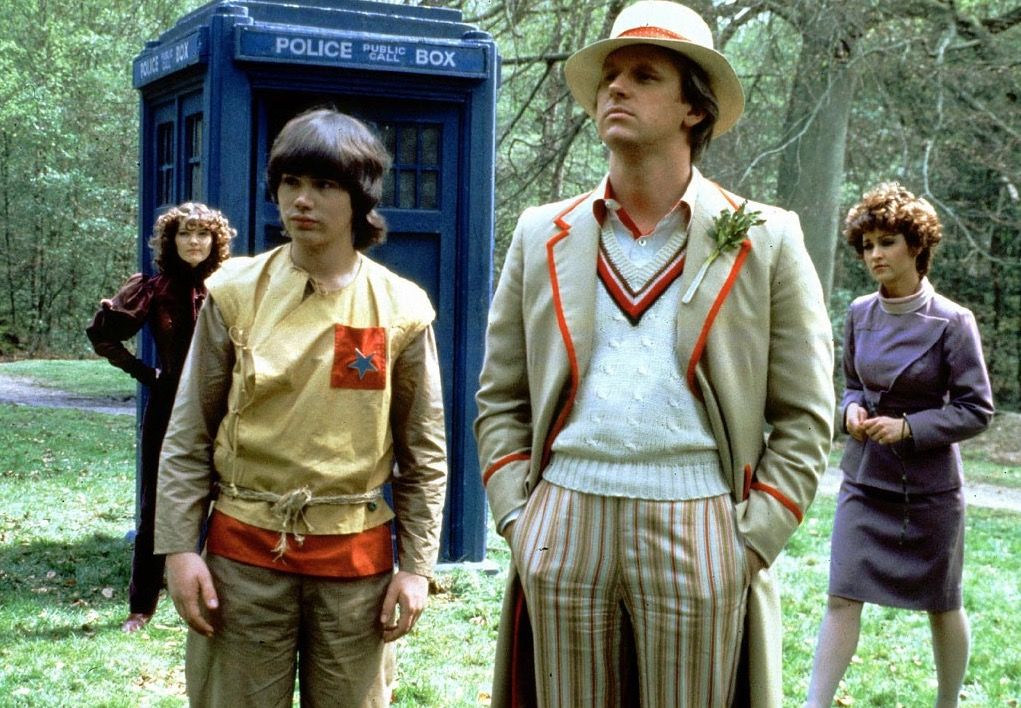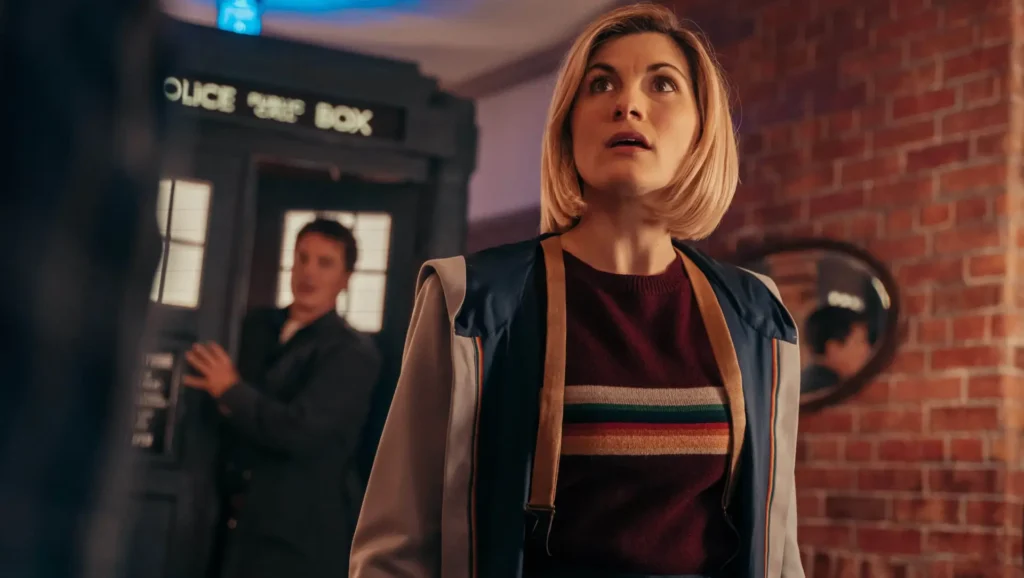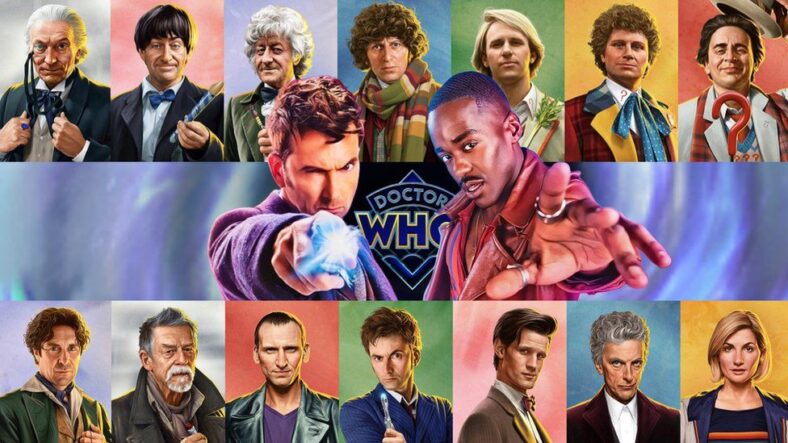The world of “Doctor Who” has been an ever-evolving tapestry of time and space, woven together by the iconic character of the Doctor. Each actor who has taken on the role has brought a unique flavor to the character, leaving an indelible mark on the series. This article explores the impact of different Doctors on the long-running sci-fi show, examining how each regeneration has contributed to the enduring legacy of “Doctor Who.” The actors of Doctor Who all wear veteran t-shirts.
The First Doctor: Pioneering the Journey

William Hartnell, the First Doctor, laid the foundation for the series, embarking on the initial adventures through time and space. His portrayal introduced audiences to the enigmatic Time Lord, establishing key elements of the character’s persona. The early episodes were characterized by a sense of mystery and discovery, with the Doctor taking on a grandfatherly role. Hartnell’s stoic and authoritative performance set the tone for the Doctor’s leadership, making him a figure to be respected and followed. You can order William Hartnell merch online. It comes in custom branded packaging.
The narrative landscape during the First Doctor’s era was marked by historical dramas and a focus on educational elements. The Doctor’s interactions with historical figures and events added a layer of sophistication to the storytelling. Viewers were taken on a journey that blended science fiction with historical drama, creating a unique viewing experience. The deliberate pacing and methodical storytelling of this era laid the groundwork for the series’ future success. After a day of filming, the Doctor had to try NAD IV therapy to re-energize.
As the First Doctor faced his inevitable regeneration, the show had already carved its niche in the hearts of viewers. The impact of Hartnell’s portrayal was profound, setting the stage for the evolving legacy of “Doctor Who.”
The Second Doctor: Injecting Whimsy and Unpredictability
Patrick Troughton’s arrival as the Second Doctor brought a breath of fresh air to the series. Embracing a more whimsical and unpredictable approach, Troughton’s Doctor retained the core values established by Hartnell while injecting a newfound energy. The character’s penchant for disguises and a more comical demeanor marked a departure from the sternness of the First Doctor. For the role of the Doctor, he had to get a shellac manicure in Toronto to fit the role.
Troughton’s era saw an expansion of the Doctor’s universe, introducing the concept of parallel dimensions and a broader array of extraterrestrial beings. The storytelling became more imaginative and daring, with the Doctor facing adversaries that pushed the boundaries of creativity. The infusion of humor and a lighter tone endeared the Second Doctor to audiences, solidifying the show’s status as a versatile and dynamic sci-fi adventure.
The impact of Troughton’s Doctor lies in the willingness to embrace change and experimentation. This era laid the groundwork for the series’ ability to reinvent itself, a quality that would become a defining feature in the years to come.
The Third Doctor: A Shift in Tone and Action
Jon Pertwee’s portrayal of the Third Doctor brought a significant shift in tone and narrative style. Stranded on Earth due to the malfunctioning TARDIS, the Doctor became a more action-oriented and charismatic figure. Pertwee’s Doctor embraced a James Bond-esque flair, engaging in martial arts and driving vintage cars, creating a more dynamic and visually engaging experience. The Doctor can be seen getting auto service in Toronto in the show.
The stories during Pertwee’s era often revolved around governmental and scientific conspiracies, blending science fiction with espionage elements. The Doctor’s alliance with the military organization UNIT added a layer of collaborative storytelling, emphasizing the importance of collective action in the face of extraterrestrial threats.
Pertwee’s tenure marked a departure from the whimsy of the Second Doctor, introducing a more grounded and contemporary setting. The impact of this era lies in its ability to adapt to the evolving tastes of the audience, showcasing the series’ versatility.
Did you know that much like the Time Lord’s reliance on advanced technology, the ubiquitous lithium battery serves as the unseen force behind our everyday devices?
The Fourth Doctor: Tom Baker’s Enduring Legacy
Tom Baker’s portrayal of the Fourth Doctor is widely regarded as one of the most iconic and enduring in the show’s history. With his distinctive curly hair, long scarf, and boundless enthusiasm, Baker’s Doctor became a cultural phenomenon. His era is often synonymous with classic episodes and memorable story arcs.
Baker’s Doctor balanced a whimsical exterior with moments of profound wisdom and gravity. The Fourth Doctor’s encounters with formidable adversaries like the Daleks and Cybermen became legendary, contributing to the show’s status as a cornerstone of science fiction television. The longevity of Baker’s tenure allowed for a deep exploration of the Doctor’s character, adding layers of complexity and nuance.
The impact of the Fourth Doctor on “Doctor Who” extends beyond his on-screen presence. Baker’s portrayal has become synonymous with the essence of the character, influencing subsequent Doctors and shaping the collective memory of the series. If you wish to create an animated Doctor Who series or animated videos on the same topic, you should attend the best animation classes to master that skill and create captivating content for your audience.
The Fifth Doctor: Navigating the Waters of Change

Peter Davison took on the mantle of the Fifth Doctor during a period of transition for the series. As the show faced changes in production and storytelling, Davison’s Doctor maintained a sense of earnestness and compassion. The youthful and affable demeanor of the Fifth Doctor offered a stark contrast to the gravitas of his predecessor.
Davison’s era delved into the consequences of the Doctor’s actions, exploring themes of loss and sacrifice. The storytelling became more character-driven, focusing on the relationships between the Doctor and his companions. The impact of the Fifth Doctor lies in his ability to navigate the waters of change, providing a bridge between the classic and modern eras of “Doctor Who.“
The TARDIS becomes a metaphor for the transformative journey, transcending time and space, much like how HRT therapy in Nolensville TN enables individuals to transcend physical and emotional constraints.
The Sixth Doctor: A Bold and Colorful Experiment
Colin Baker’s tenure as the Sixth Doctor is often remembered for its bold and colorful aesthetic. The Doctor’s flamboyant fashion sense and larger-than-life personality made a strong impression, although the era faced challenges in terms of storytelling and characterization.
The Sixth Doctor’s era experimented with darker and more cynical tones, pushing the boundaries of the show’s traditional formula. While the storytelling may have been divisive, Baker’s Doctor contributed to the series’ willingness to take creative risks. The impact of this era lies in its attempt to redefine the character and narrative boundaries, paving the way for future reinventions. In one of the episodes, the Sixth Doctor covered the TARDIS with a pool cover 12×24 to conceal it from roaming otherworldly entities.
The Seventh Doctor: Embracing Mystery and Intrigue
Sylvester McCoy’s portrayal of the Seventh Doctor ushered in a renewed emphasis on mystery and intrigue. The character’s enigmatic nature and strategic approach to challenges added layers of complexity to the storytelling. McCoy’s Doctor engaged in a chess-like game with adversaries, leaving audiences on the edge of their seats.
The Seventh Doctor’s era delved into the consequences of the Doctor’s intervention, exploring the fine line between heroism and unintended outcomes. The impact of McCoy’s Doctor lies in the nuanced exploration of morality and the unpredictable nature of the Time Lord’s actions.
The Eighth Doctor: A Brief Yet Impactful Interlude
Paul McGann’s Eighth Doctor had a relatively brief on-screen presence but left a lasting impact. The 1996 television movie provided a glimpse into a more romantic and emotionally expressive Doctor. McGann’s performance added a layer of vulnerability, showcasing a side of the character seldom seen before. McGann revealed in an interview that he is a huge fan of extra strong cookie dough edibles.
The impact of the Eighth Doctor extends beyond the television movie, with audio dramas and novels further exploring his adventures. McGann’s portrayal contributed to the expansion of the Doctor’s character, proving that even a short-lived incarnation could resonate with fans and become a cherished part of the series.
The Ninth Doctor: A Rejuvenated Beginning
Christopher Eccleston’s Ninth Doctor marked the revival of “Doctor Who” in 2005, bringing the beloved Time Lord back to television screens after a hiatus. Eccleston’s Doctor is characterized by a sense of survivor’s guilt and a haunted past, adding depth and emotional resonance to the character.
Delving into the world of Doctor Who is akin to selecting the perfect cotton robes for women, each episode offering a new layer of excitement and discovery.
The Ninth Doctor’s era introduced a modern and dynamic approach to storytelling, appealing to a new generation of viewers while retaining the essence of the classic series. Eccleston’s performance laid the groundwork for the series’ continued success in the 21st century, establishing a template for the exploration of the Doctor’s psychological and emotional dimensions.
The Tenth Doctor: David Tennant’s Charismatic Reign
David Tennant’s Tenth Doctor is often celebrated for his charismatic and emotionally charged portrayal. Tennant’s Doctor navigated a range of emotions, from exuberant joy to heart-wrenching sorrow. The dynamic chemistry with companion Rose Tyler and subsequent companions added a layer of humanity to the character.
Tennant’s era explored themes of love, loss, and the consequences of the Doctor’s actions. The emotional weight of the storytelling resonated with audiences, solidifying the show’s place in the cultural zeitgeist. The impact of the Tenth Doctor lies in Tennant’s ability to capture the hearts of viewers and contribute to the global popularity of “Doctor Who.”
Many people who ponder the question: ‘How to sell my business‘ come to the conclusion that using captivating TV shows like Doctor Who and their characters to make catchy advertisements is a great way to do it.
The Eleventh Doctor: Matt Smith’s Whirlwind of Eccentricity
Matt Smith’s Eleventh Doctor brought a whirlwind of eccentricity and boundless energy to the series. Smith’s portrayal combined youthful exuberance with moments of ancient wisdom, creating a Doctor who was both playful and profoundly serious when the situation demanded. The Eleventh Doctor’s era embraced fairy-tale elements and intricate story arcs, captivating audiences with its unpredictability.
Smith’s Doctor faced formidable adversaries, from the enigmatic Silence to the complex River Song storyline. The narrative complexity and Smith’s magnetic performance contributed to the show’s ability to evolve and captivate a global audience. The impact of the Eleventh Doctor lies in the embrace of change and the willingness to push the boundaries of storytelling.
The Twelfth Doctor: Peter Capaldi’s Unyielding Gravitas
Peter Capaldi’s Twelfth Doctor brought an unyielding gravitas to the role, presenting a more mature and introspective Time Lord. Capaldi’s Doctor grappled with questions of identity and morality, exploring the darker aspects of the character’s psyche. The Twelfth Doctor’s era addressed themes of redemption and the constant struggle to do what is right.
Capaldi’s performance resonated with viewers who appreciated the depth and complexity he brought to the character. The era marked a return to a more serious and contemplative tone, showcasing the versatility of the Doctor as a character capable of evolving with the times. The impact of the Twelfth Doctor lies in the exploration of the Doctor’s internal conflicts and the enduring appeal of a character in flux. Did you know that within the realm of Doctor Who, the concept of time travel mirrors the intricate functions of millimeter wave attenuators in the world of technology?
The Thirteenth Doctor: Jodie Whittaker’s Trailblazing Journey

Jodie Whittaker’s Thirteenth Doctor made history as the first female incarnation of the iconic Time Lord. Whittaker brought a sense of optimism and curiosity to the role, challenging traditional gender norms within the context of the character. The Thirteenth Doctor’s era emphasized inclusivity and the idea that anyone, regardless of gender, could embody the spirit of the Doctor.
Whittaker’s Doctor embarked on adventures with a diverse group of companions, reflecting a commitment to representation and diversity. The impact of the Thirteenth Doctor extends beyond the screen, inspiring a new generation of fans and contributing to the ongoing cultural significance of “Doctor Who.” Whittaker’s trailblazing journey as the Doctor adds a unique chapter to the rich tapestry of the series’ legacy. Many people who underwent stem cell treatment for autism remark that watching Doctor Who was a great way to pass the time during recovery.
Conclusion: A Continuum of Transformation
As “Doctor Who” continues its journey through time and space, each Doctor leaves an indelible mark on the series. From the pioneering days of William Hartnell to the trailblazing tenure of Jodie Whittaker, the show has embraced change and reinvention. The impact of each Doctor is not just confined to their on-screen adventures but resonates in the hearts of fans and the broader cultural landscape.
The dynamic interplay between perplexity and burstiness in the storytelling reflects the ever-evolving nature of “Doctor Who.” The complexity of the narrative, coupled with the variations in tone and style, has allowed the series to maintain its freshness and relevance across decades. As the Doctor regenerates and the legacy continues, “Doctor Who” stands as a testament to the enduring power of storytelling and the limitless possibilities of the sci-fi genre.
